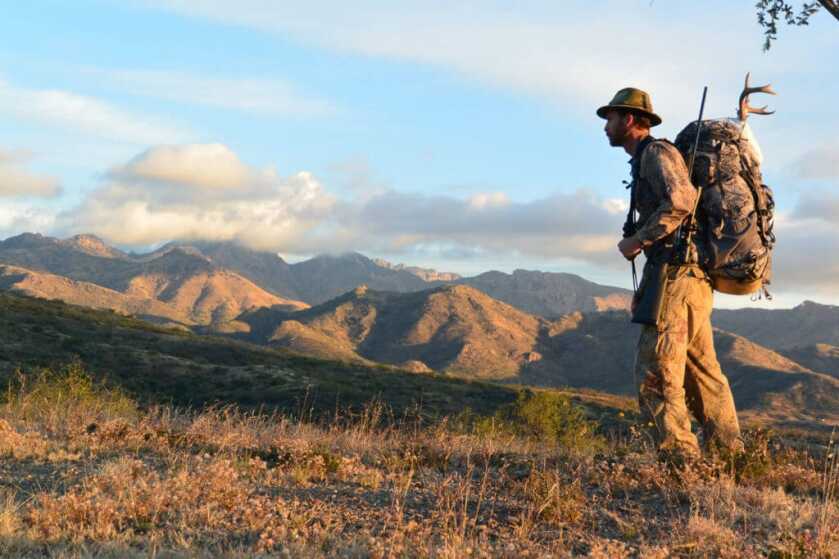
READ PART 1: How to Assemble an Awesome Bivy-Hunting Setup – Part One: Camping & Sleeping Gear
READ PART 2: How to Assemble an Awesome Bivy Hunting Setup – Part 2: Water, Food, and Backcountry Cooking
Dawn broke clear over the broken badlands of Utah’s desert mule deer country, inexorably chasing reluctant shadows across the western horizon. A deer moved, the first I’d seen in two days. It was a buck, sneaking away through the sage and juniper. Throwing my pack across a short rocky outcropping, I rested my rifle and tried to get a good look at the deer. But all I could do was follow his dark blob across the flat, catching an occasional brief glimpse of antler. The morning light wasn’t yet strong enough to see, even with premium optics.
Just minutes later the shadows had faded and daylight arrived. I trotted across the swale, hoping to intercept the buck around the end of the next mesa, hoping to get a better look at him. A flash of white against dark earth caught my eye and I glanced down at the perfect outline of a tiny white arrowhead. Dropping to one knee I held the little arrowhead toward the rising sun, thanked the Ancient Ones for the gift and invited them to hunt with me. Then I trotted on, crossed the little mesa, and approached the edge with care. Glassing the brush-covered flat below I caught a glimpse of a deer. I slid in prone behind my rifle and found the animal in my scope. He raised his head and heavy, deep-forked antlers slid into view. Settling my crosshairs, I pressed the trigger…
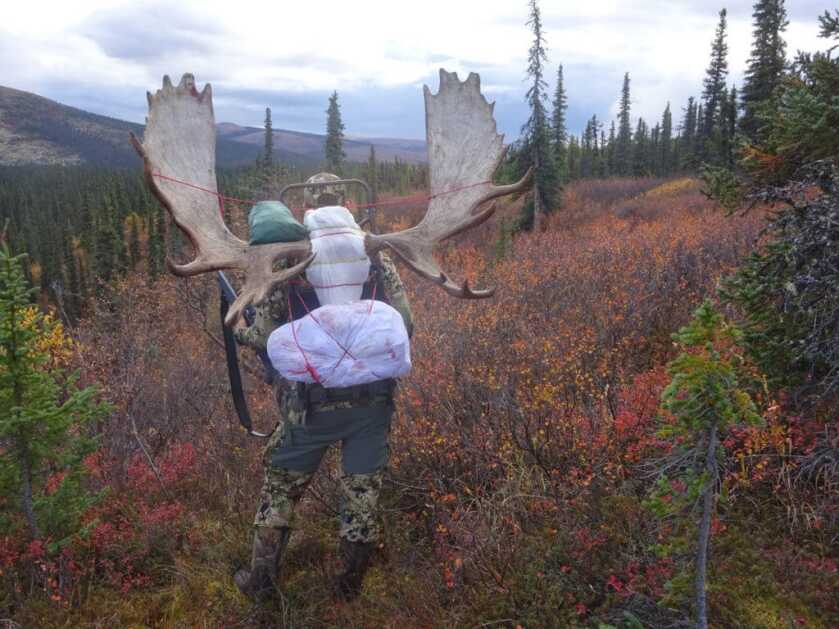
The story above happened just this past October when a friend and I loaded our backpacks with food, lightweight camping gear, and a bit of water, and hiked deep into extremely rugged desert mule deer country. Our tiny bivy camps went unnoticed in a thick mesa-top stand of pinyon and juniper, and by careful hunting and a lot of luck we had two great desert bucks down by the fourth day. It took two more days to backpack the meat out to the truck, and a week for our middle-aged physiques to recover from the abuse. It was awesome.
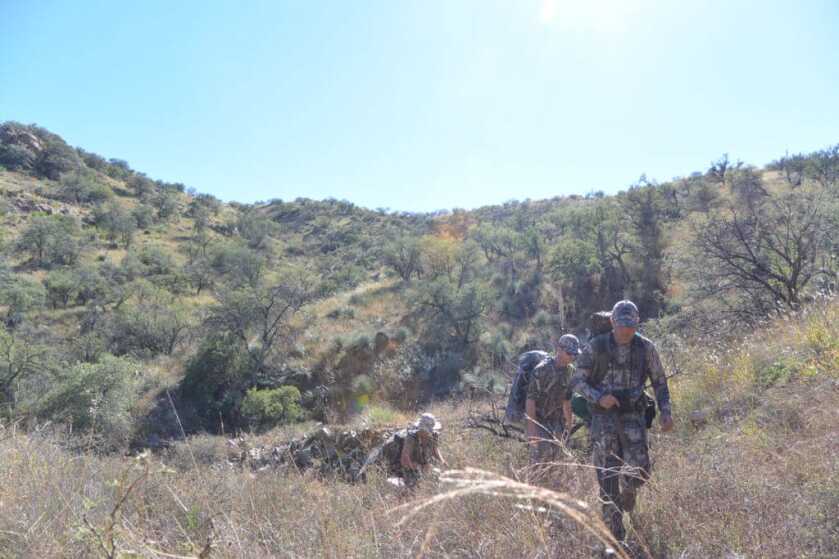
THE RIGHT GEAR
I hope that you’ve read the first two parts of this series, and by now understand the importance of using top quality gear when you’re hunting or scouting wilderness territory. We’ve covered good camping and sleeping gear in part one, and purifying water and cooking food in part two. In part three let’s take a detailed look at the remaining essential gear, as well as great backcountry rifle setups. Remember; good quality gear lasts longer, works better, and offers the best chance of keeping you alive when the chips are down.

NECESSARY GEAR
There are a few items besides those discussed in parts 1 and 2 that I consider necessary. Beyond these few items, you can simply use your usual hunting equipment. Just follow this guideline when loading your backpack: don’t take anything you don’t actually need, and make sure that what you do take is lightweight and superior quality.
SATELLITE COMMUNICATOR: My favorite model is the inReach (or the inReach Mini) by Garmin. It’s an amazingly capable unit; enables you to keep in touch with loved ones or hunting partners, check the weather, navigate, store waypoints, and more. And in a life-threatening backcountry disaster, you can press the SOS button, summoning emergency rescue teams directly to your location. The inReach does require a subscription, but it’s user-friendly and adaptable.

CAMERA: Some of my all-time favorite photos have been taken during backcountry trips. Nowadays the best option for a lightweight camera is usually your smartphone. An additional benefit is the capability to sync your phone with your inReach, access your OnX app, and more. Keep the phone turned off to conserve battery except for when you’re using it.
MAP & COMPASS: Always carry a superlight compass and USGS 7.5-minute topographic maps of your hunting area. They’re great for navigating, offering a much better big-picture view of the area than hand-held electronics. Furthermore, GPS and other electronics can fail, and if you don’t have a map you may find yourself lost in the wilderness.
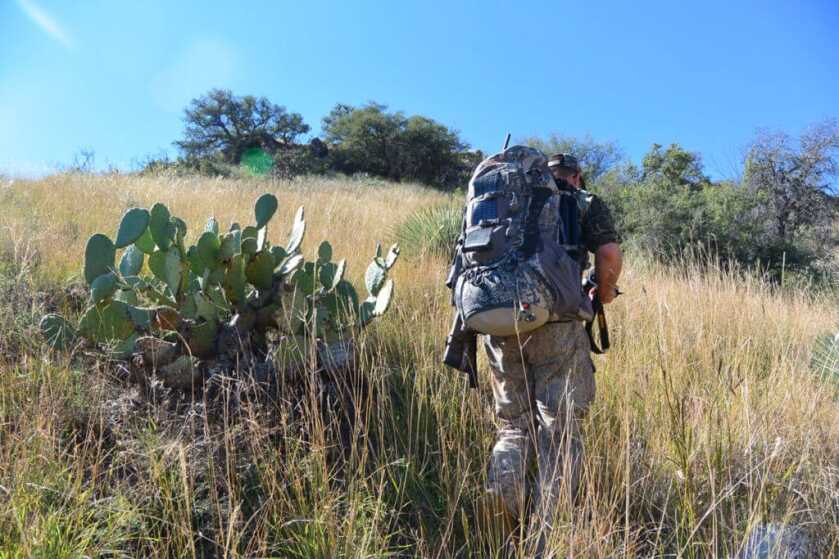
BACKPACK: Volumes can be written on choosing and wearing backpacks. I’ll keep it short and just offer this advice: Use a well-fitted internal frame pack of around 5500 cubic inches. Make sure the suspension system is really good, and the right size for your build. Go to a store and enlist a knowledgeable salesperson to help, adjust several potential packs to fit, and load them with 40 pounds of weight. Wear each around, climbing stairs if possible to simulate mountain terrain, until you know which one fits and feels the best. Don’t rush this process; shop until you find the perfect pack. After all, it’ll be your home away from home while you’re in the backcountry, and can cause you to be purely miserable if the fit and function are not right. You may need to try several stores and pack brands before finding the perfect fit. In addition to shopping good mountaineering brands, you can check out cutting edge hunting gear brands like Badlands, Kifaru, and Sitka. Once you find the perfect pack shell out your hard-earned cash and take it home with you.
One exception to using an internal-frame pack would be during a hunt where you expect to carry very heavy loads – in excess of 80 pounds – for a very long distance. In that case, I recommend the Alaska Freighter external-frame pack sold by Barney’s Sports Chalet. It’s the best frame I’ve ever used, and adjustable to fit almost any physique.
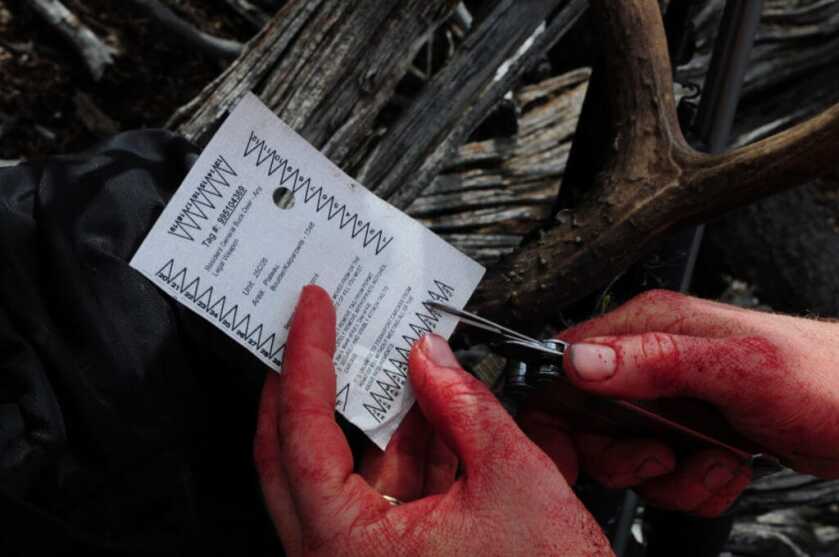
MULTITOOL: The tool I reach for most often while camping or bivy hunting is my Leatherman multi-tool. I use it for cooking, untying hard knots, cutting cordage, and 101 other things. Get one of the smaller models complete with pliers, blade, regular and Phillips screwdrivers, and can-opener. It’ll become your best friend in the backcountry.
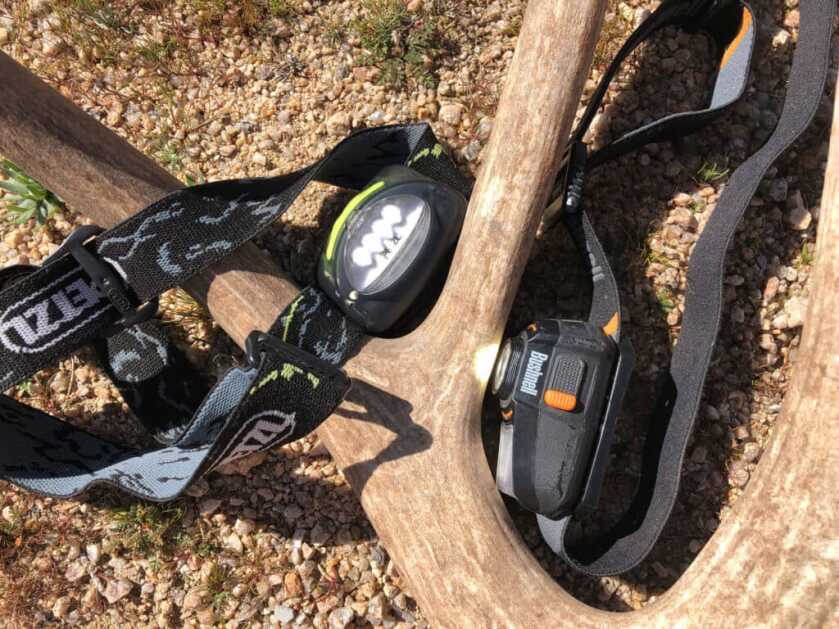
HEADLAMPS: Carry two. Use one and keep the second stowed in your pack as a backup in case you break or lose the first. Headlamps are much superior to flashlights because they leave your hands free to perform other necessary tasks. Use LED models – they offer far better battery life than a conventional light, often running over 100 hours of usage when on their lowest brightness setting. Here again, make sure your headlamps are compact, lightweight, and comfortable.
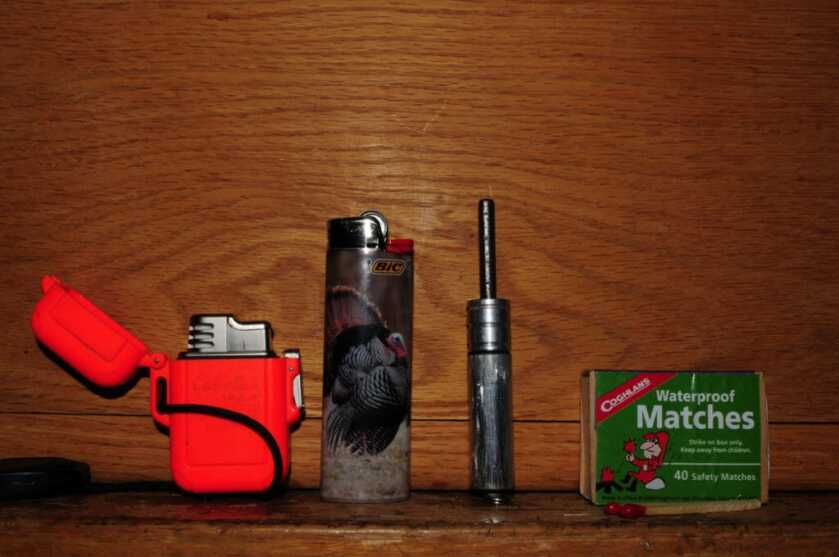
FIRE STARTING KIT: Sometimes the only thing standing between you and death is a fire, and being able to kindle a blaze under duress is critical. I personally like to carry one lighter in my pocket at all times, and a second in my pack, along with some waterproof matches and little bricks of Wetfire, pitch-pine, Vaseline-impregnated cotton balls, or the like. If one lighter fails, you can resort to your backup lighter or the matches. Light your pitch pine or firebrick, then carefully add tiny dry twigs, pine needles, and such till you have a small blaze. Then add bigger stuff. If you’re not experienced at starting fire you should practice before you venture into the wilderness.

FOOTWEAR: The best advice I can give you here is to get good shoes that fit your feet, and then make sure they’re well broken in before your hunt. During a mid-season elk hunt where rain, snow, and dew are likely, wear a waterproof boot like Danner’s Pronghorn. On a desert mule deer, coues deer, or sheep hunt waterproof is heavier and unnecessary; I like Danner’s Tachyon boots for those hunts. For an Alaska hunt where you’ll be in moist conditions most of the time, you might opt for a lightweight pull-on Muck Boot or the like. Whatever you use, make sure they fit and wear them ahead of time.
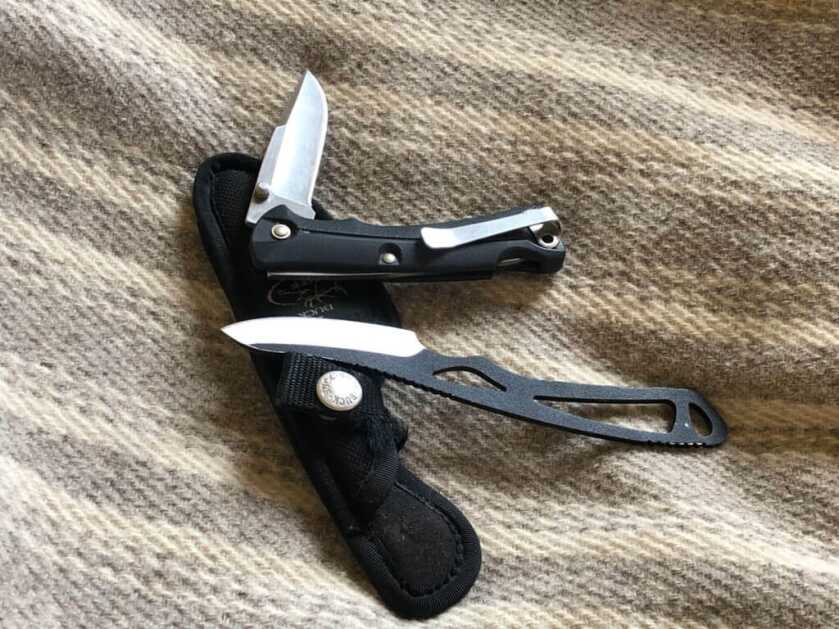
KNIVES: A wilderness hunt is not the time to carry your grandpa’s big heavy hunting knife. I personally like to carry two superlight knives, one folding and one skeletonized fixed-blade. Both are made by Buck and are available online or at sporting goods stores. I carry two in case I lose one. On a super hardcore hunt, I’ll leave one behind, relying on my multitool if I need a backup blade. I also carry a tiny diamond sharpening stone made by Eze-Lap for touching up my blades during big processing jobs.
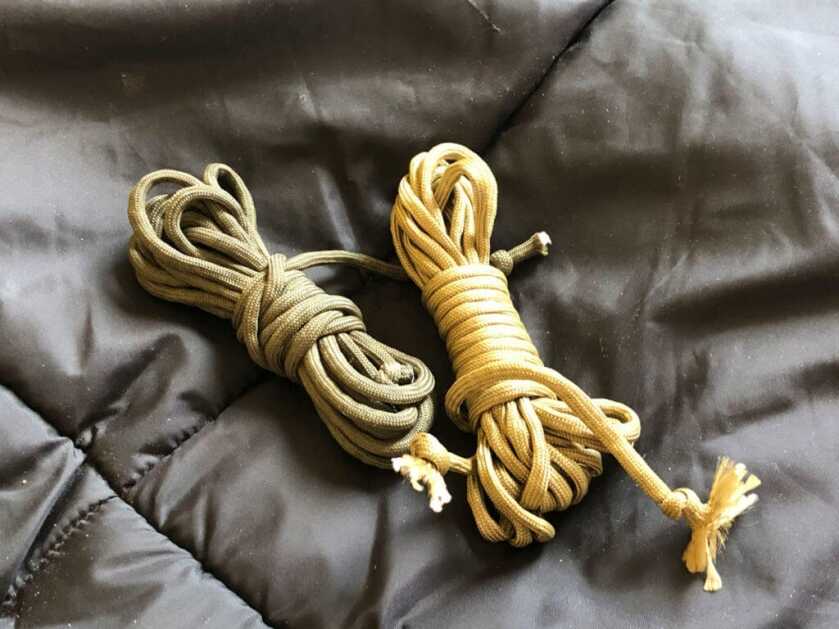
CORDAGE: The best cordage for wilderness use is 550 Parachute cord. Commonly called P-Cord or Paracord, it sports seven small strands encased inside a braided, abrasion-resistant outer sheath. You can use it as is or pull the smaller strands out for smaller jobs. Carry about 50 feet during a typical bivy hunt to use for hanging deer or elk quarters, repairing gear, stretching tarp shelters, and so forth. The stuff is handier than a shirt pocket.

BACKCOUNTRY RIFLE
This is another subject that could fill a book. It’s one of my favorite things to talk about, but I’ll try to keep this short and to the point. We’ll look briefly at rifle configuration, ideal optics, and great calibers for backcountry work.
RIFLE: A lot of manufacturers have recently added “Mountain” or “Sheep” rifles to their lineup, which is a great thing for you and I. Essentially, these rifles are designed for rugged adventures in demanding terrain and to be light enough to carry on a backcountry bivy hunt. Most will weigh six pounds or less without scope, sling, or ammo. You can find such rifles as cheap as a few hundred bucks, but most start around $1,800 and go up from there. Some of my favorites are Kimber’s Mountain Ascent, Browning’s X-Bolt Pro line, Nosler’s Mountain Hunter, Weatherby’s Backcountry, and the Gunwerks ClymR.
SCOPE: Here again, a lot of backcountry-worthy scopes have been designed in recent years. Buy the best scope you can afford. Make sure it’s lightweight, compact, and mounted in superb lightweight rings like Talley’s one-piece alloy mounts. If you expect shot opportunities beyond 300 yards get a scope with a zero-stop style dial-up elevation turret and learn to use it. Some of my favorite riflescopes come from Leupold, Zeiss, and Swarovski.
CARTRIDGES: There are a plethora of great cartridges for wilderness hunting, including some proven historic rounds like the venerable .30-06, as well as some new hot-rod cartridges such as the 6.5 PRC. All have their strengths and weaknesses. Here are some of my favorites according to species and long-range capability:
6.5 Creedmoor: Great for deer-sized game and ranges out to 750 yards.
6.5 PRC: Great for deer and even longer ranges.
.280 Ackley Improved: Awesome deer and elk round, and awesome for long-range work as well.
.30-06 Springfield: Fantastic deer and elk cartridge, limited long-range capability.
.28 Nosler: I don’t have much personal experience with this caliber, but many of my backcountry-hunting friends swear by it. Great for everything up to and including moose, and one of the finest long-range cartridges out there.
.300 Winchester Magnum: Great moose-and-under cartridge, and adequate (with careful shot placement) for the big bears. Good for long-range as well.
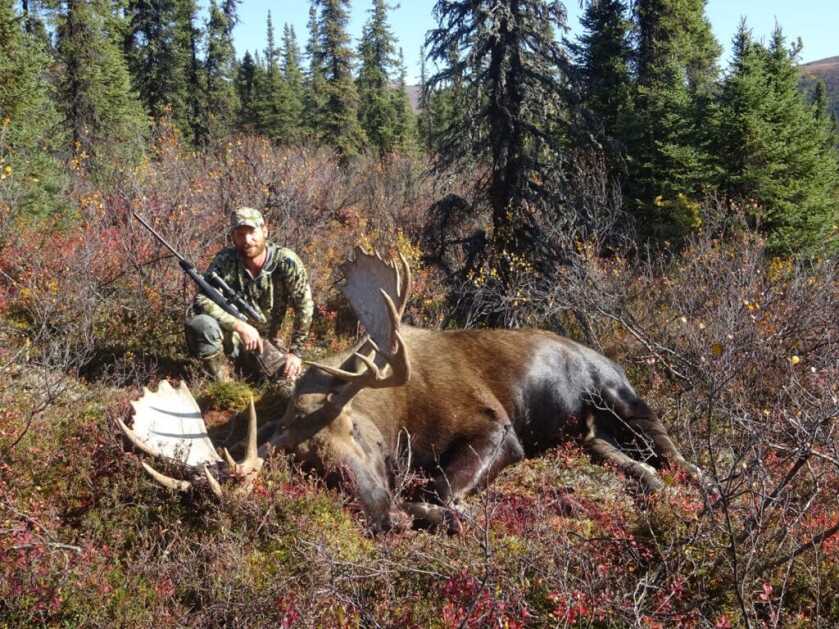
CONCLUSION
One thing I want to point out at the conclusion of this three-part series is that you don’t have to spend a fortune on gear. True, I stress repeatedly that you need to buy the best gear you can afford. But when I started out the best gear I could afford was surplus military wool clothing, a borrowed backpack, and a Cabela’s sleeping bag. My rifle was a sporterized WWI .30-06 Springfield, my boots L.L. Bean Old Timers. That gear worked, and still does. It’s heavier, but I was younger then and wear and tear on my body didn’t hurt as bad and for as long as it does these days. But the most important – and most priceless – things you must have to bivy hunt the wilderness are courage, resourcefulness, and desire. With them, even the poorest young hunter can venture into the backcountry and come out laden with wilderness treasure in the form of meat, memories, and antlers. I proved that, as have countless other hunters over the centuries. So gather your gear, build your skill, and go. Those backcountry hunts will be the best of your life.


Trophy hunting for antlers or a bear’s coat is obscene gluttony. If you aren’t going to eat it just leave it alone.